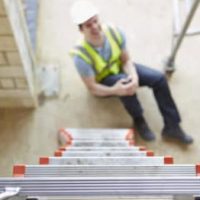What is the Most Dangerous Equipment on Construction Sites?

It is no secret that construction jobs are dangerous. According to Industrial Safety & Hygiene News, around 10% of all construction workers are injured every year. For workers under the age of 18, construction is the second most fatal occupation. Safety training is absolutely vital for minimizing risks, but enforcement of training standards is sometimes lax and many employees never receive the training they need.
If you have been injured on the job, you might qualify for workers’ compensation benefits. You could also bring a lawsuit for compensation against someone other than your employer. Please reach out to Earnhart Law for more information.
Saws
Most construction sites use circular saws, table saws, or chain saws. When these saws malfunction, or when the worker does not have adequate training, then serious injuries can occur. Construction workers have lost fingers or limbs and suffered painful scarring and lacerations in saw incidents.
Scaffolding
Many construction workers need to work up high and therefore use scaffolding. The federal government closely regulates how scaffolding is erected and maintained, but accidents involving scaffolding have proven difficult to stamp out. A worker can fall off the scaffolding or knock equipment off which strikes pedestrians and workers below. In serious accidents, the scaffolding can collapse, sending workers pinwheeling to the ground.
Ladders
As with scaffolding, defective ladders cause construction workers to fall. Ladders have many potential hazards, including:
- Missing rungs
- Oil and grease on the rungs
- Overloaded ladders
- Feet which are not slip resistant
- Improperly mounted ladders
If a ladder has been defectively designed or constructed, then you can bring a lawsuit against the manufacturer and others. People who fall from ladders have suffered serious head and brain injuries, as well as broken bones, spinal cord injuries, and nerve damage.
Cranes
Cranes are present at many construction sites, lifting heavy materials or even workers. An unbalanced crane is at serious risk of toppling over. If the crane is on top of a building, it could crash to the ground, crushing vehicles and pedestrians down below.
An improperly operated crane can also touch power lines, causing electrocution and burns to the operator and others.
Forklifts
Workers use forklifts to move heavy loads around the job site, thus sparing workers the stress of lifting heavy materials themselves. However, an improperly operated forklift can crash into workers or drop loads on them, causing devastating injuries. When a worker does not have adequate training, accidents are almost inevitable. Other forklifts are defective and might break down without any prompting from the worker.
Find a Delray Beach Workplace Accidents Lawyer Today
Workers who are injured on the job can qualify for workers’ compensation benefits, which should cover reasonably necessary medical care and possibly a portion of your lost wages if you cannot work. In some situations, you might also be able to sue a third-party that injured you, such as the manufacturer of defective equipment.
Contact the Delray Beach workplace accident attorneys at Earnhart Law today. You can schedule a free consultation by calling 561-265-2220. We will help you identify all avenues for compensation so you can make a strong recovery.
Resource:
ishn.com/articles/103831-shocking-construction-injury-statistics
https://www.delrayinjuryattorneys.com/construction-industry-safety-tips/
